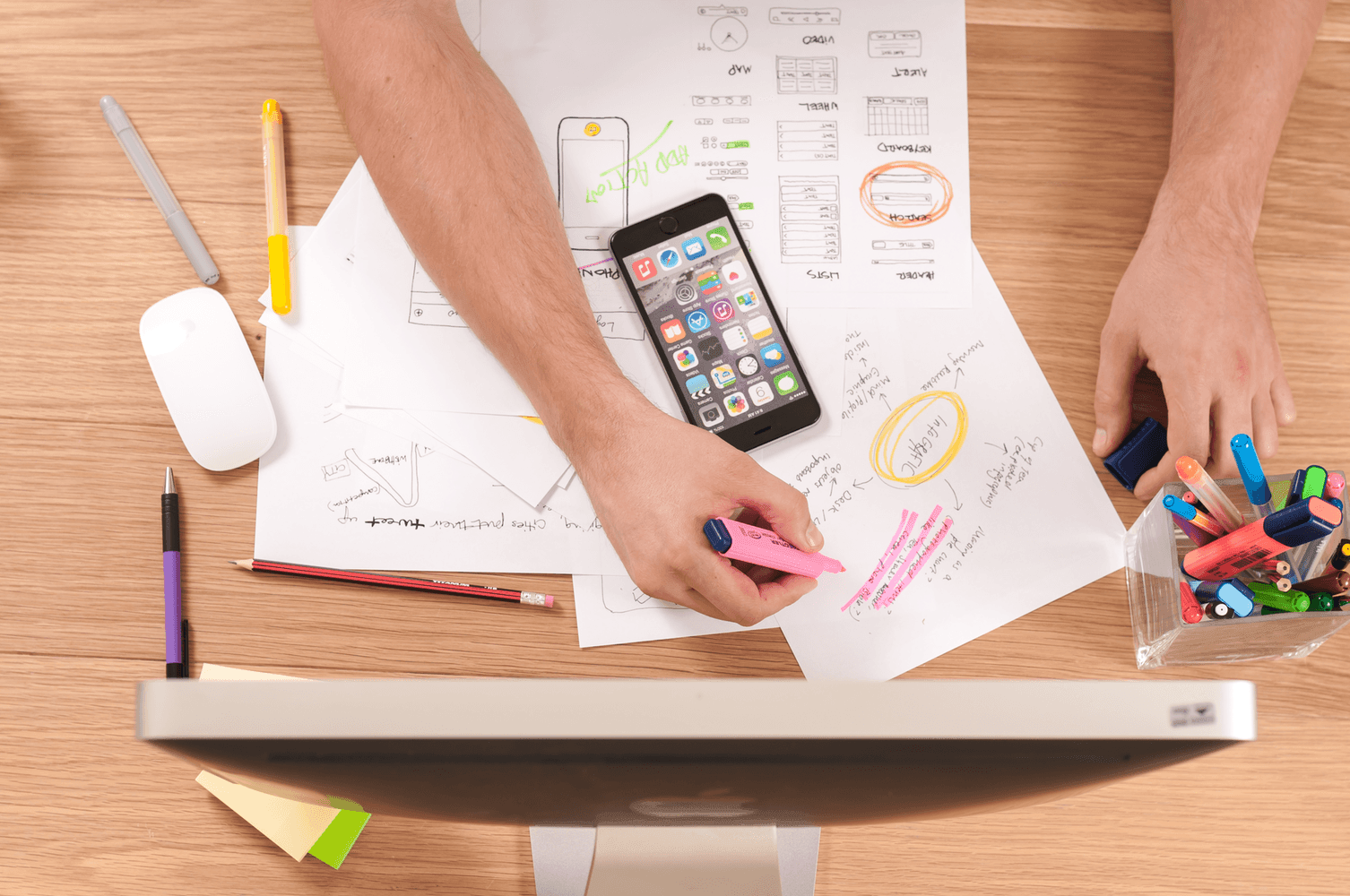What is User Experience (UX) Design?
User Experience Design (UX) is the product creation process that provides users with meaningful and relevant experience. This involves designing the entire product acquisition and integration process, including aspects of branding, design, usability, and functionality.
UX design is about thinking and designing a website/web app so that the user experience is the best possible. It remains to define what a good user experience.
In an interview with Adaptive Path, Donald Norman (the inventor of UX) said:
I invented the term because I thought human interface and usability were too narrow. I wanted to cover all aspects of the person’s experience with the system including industrial design graphics, the interface, the physical interaction and the manual. Since then the term has spread widely, so much so that it is starting to lose it’s meaning.”
What UX designers are doing goes beyond UI design
“User Experience Design” is often used interchangeably with terms such as “user interface design” and “usability.” However, while usability and user interface design are important aspects of UX design, they are a subset of it – the UX design also covers a wide range of other areas. A UX designer looks at the entire process of acquiring and integrating a product, including aspects of branding, design, usability, and functionality. It’s a story that begins before the device is in the hands of the user.
The user interface (UI) is an important element for a powerful site. The design of a good user interface is codified and is essentially related to the zoning of pages and their graphic appearance (contrary to popular belief, the web design is methodical and very little artistic). The user experience goes further: the user interface is just one component.
No product is an island. A product is more than the product. It is a cohesive, integrated set of experiences. Think of all the courses of a product or service – from initial intentions through final reflections, from first use to help, service, and maintenance. Make them all work together seamlessly. D.Norman
What is important for UX designers?
To define what good user experience is, just remember the bad ones. Who did not a pest in front of a damn bad site where it is impossible to navigate the categories? How many of us will immediately see elsewhere when an error message appears? Who wants to fill 5 pages of forms to place an order for 20 EUR? The UX design aims to think of a website so that the user feels good, confident, and can find the information he seeks while wanting to interact with the site.
A UX designer will consider the Why, What and How of product use. The Why involves the users’ motives for adopting a product, whether they relate to a task they wish to perform with or to use the product. The things that people have to do with a product-its functionality. Finally, How relates to the design of functionality in an accessible and aesthetically pleasing way. UX designers start with the question of why and what, finally, how users can form meaningful experiences. In software designs, designers must ensure the product’s “substance” comes through an existing device and offers a seamless, fluid experience.

Important elements of the user experience include for a designer is as below :
- The appearance of the site and its ergonomics (consistency of design, placement of elements …)
- Its ability to reassure the user on its credibility (no mistakes, company identification, testimonials …)
- The effectiveness of the site: one must find intuitively and easily the information sought (internal search engine, content categorization …)
- SEO, which must allow users to find or find the site easily from the search engines
- Ease of use: for example, a smooth ordering process for an online store
- The ability to adapt to the different terminals used by users: mobile, tablet, laptop, large screens …
In other words, we have 5 Essential Elements of Great User Experience Design

1. User-Friendly Information Architecture
The information architecture is the science of organizing, labeling and classifying the content of a website, applications or software. The goal is to create a website that helps users understand and find the content they need.UX architecture information can be referenced as the keystone of a digital product. This helps to design the navigation context for your services, and if the foundation is solid, the experience will be stronger.
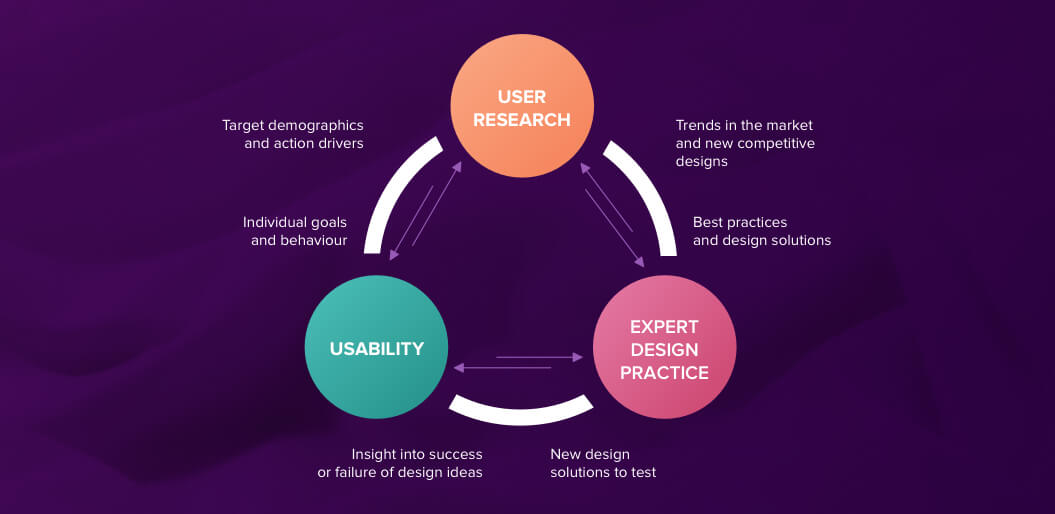
2. Good Interaction Design = Good UX
Interaction Design (IxD) defines the structure and behavior of interactive systems. Interaction designers strive to create meaningful relationships between people and the products they use, from computers to mobile devices and beyond. Our practices are evolving with the world. “-The Interaction Design Association (IxDA)
Good interaction design centers on human connection. Interaction design is not only about how interfaces behave, but it’s also about how people behave and then adapting the technology accordingly. You need to understand your users and determine where they are and where they are. This is an integral part of building a positive user experience.
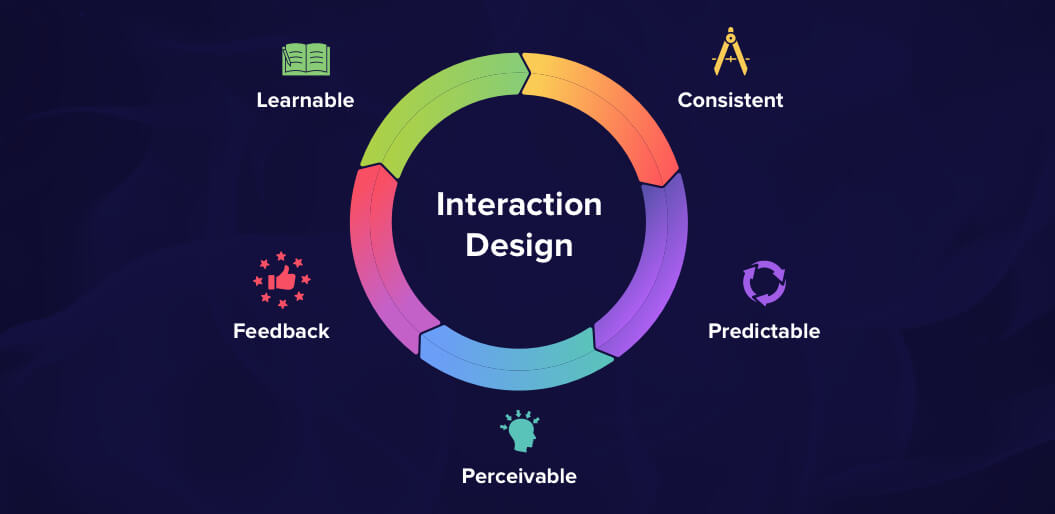
3. Good Usability Design
Usability design is intended to improve the usability of a product, which is an important element in guiding the actual design. It can also be considered a “user-centric design”. A site with good usability must respect the following factors: fast connection, well designed, full description and tests, simple operations, user-friendly and meaningful information interaction, unique style.
Usability is a measure of a product that has been used in a specific scenario by specific users, which can achieve the specific objective satisfactorily and effectively. From the user’s point of view, it is important to make it easier for users to operate, and they can operate with a pleasant mood rather than feeling stupid. The best way to ensure usability is to test the users on the working system.
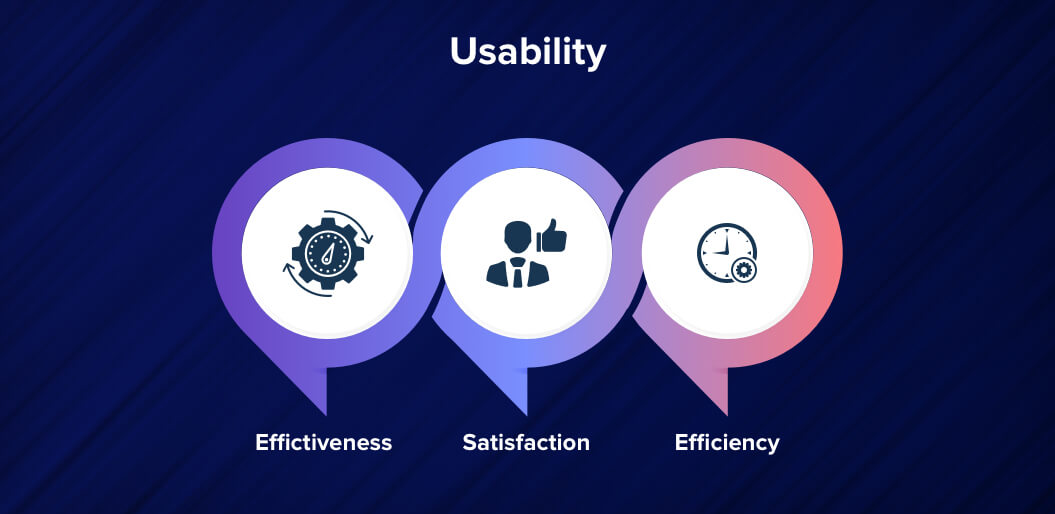
4. Great Visual Design
Visual design plays an important role in the user’s experience and they will know what to do and what not to do. It includes information design and visual design.
Visual design as a domain is born from both user interface design and graphic design. Visual design aims to shape and enhance the user experience by taking into account the effects of illustrations, photography, typography, space, page layouts and colors. products and their aesthetic appeal. To help designers achieve this goal, visual design takes into account various principles including unity, Gestalt properties, space, hierarchy, balance, contrast, scale, dominance, and similarity.
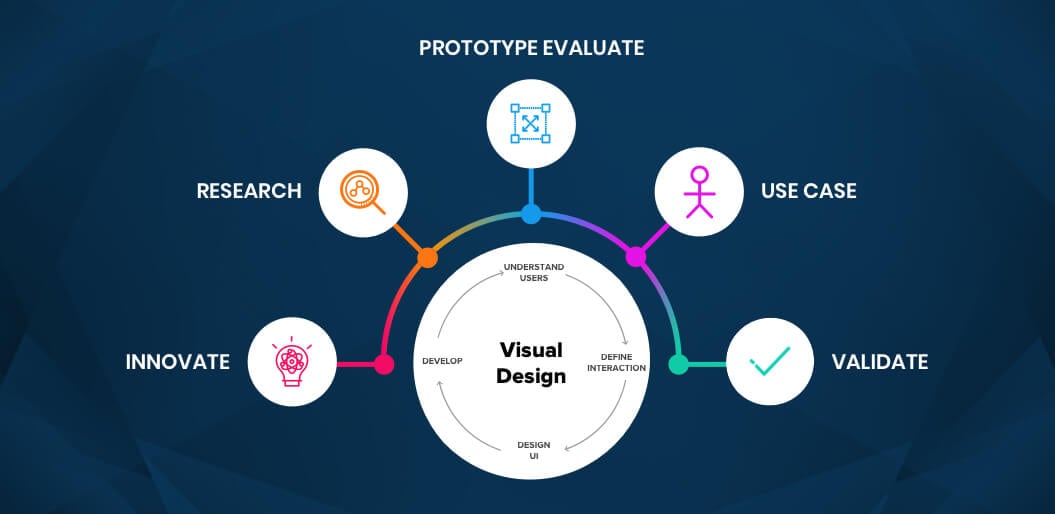
5. Planned User Research
User research is another essential part of the design process that should not be ignored by UX designers. Long shots or no plans do not work for people. You must be able to reduce a UX search plan to a page. If you can not or will not, you will not get participation in the research and its results.
Planning User Experience Projects (UX) is a balancing act of getting the right number of users into the constraints of your project. The trick is to determine the best use of your time.
The research phase
This is where you immerse yourself in the project to get the background you need to make design decisions later in the project. During this phase, you will try to learn as much as possible about your client’s activities, goals, users, and competitors.
The design phase
This is where you determine how your project will work and how it will fit. This phase will define its scope, features, functionality, and behavior.
The validation phase
This is where you determine if what you have proposed in the design phase works with the target audience. This phase is usually followed by additional phases of design and testing to solve the problems you inevitably encounter when testing with users.
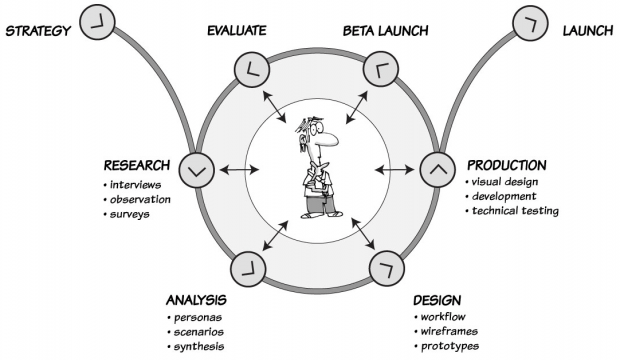
the ideal UX process
to determine the ideal user experience process-we need to define our UX strategy and UX design and so make confronting these two. But what is UX strategy?
what is UX strategy?
The UX strategy is the process that must be started first before the design or development of a digital product begins. This is the vision of a solution that must be validated with real potential customers to prove that it is desired in the market. A solid strategy is a difference between success and failure.

Image credit: Sherif Amin
What is user experience design?
The user experience is the value you provide to your user when using your product.
“User Experience Design (UXD or UED) is the process of improving user satisfaction with a product by improving the usability, accessibility, and enjoyment of product interaction.” – Wikipedia
Developing a user experience in customer satisfaction is not the responsibility of a single person or a team, but the vision of the company.
what is the user experience process?
The UX process is an iterative method that helps you continuously improve and refine and polish your designs with user feedback.
The user experience design process is an iterative method that helps you continuously improve and polish your designs.
During the process, you go through different steps while evaluating your designs at each step.
Each step involves the stakeholders in your organization who are involved in the process to make your products very effective and usable.
The design process involves six steps.
During the process, you go through different steps while evaluating your designs at each step.
Each step involves the stakeholders in your organization who are involved in the process to make your products very Description 2
The design process involves six steps.
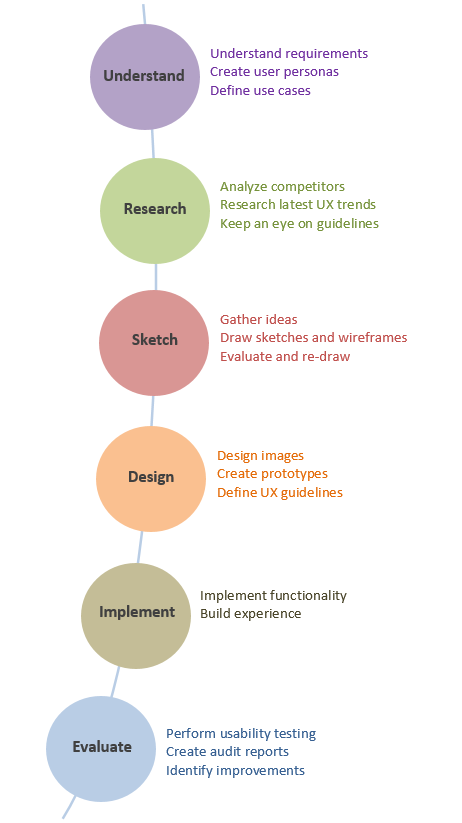
UX Affects Your SEO
User experience design (UX) should be an integral part of any SEO strategy. It directly affects your ranking in SEO through the various user engagement metrics that Google uses in its search algorithms. The design of the user experience begins with understanding how users perceive and interact with your website. You need to consider factors such as page speed, menu design, mobile responsiveness, and URL structure. If you do not know how to get started, use an experienced user agency to help you in this process.
By implementing an effective UX design, you’ll gain better user engagement, which will influence your search rank, brand credibility, and audience retention.
Ian Lurie from the Portent blog had a great thought about UX and SEO :
He learned in the end that SEO & UX must work together in order for a site to be successful:
- the myths about SEO & UX are false – it’s not impossible to coexist, and neither hinders the other
- poor UX will lead to poor SEO. Plain and simple, and the reverse is also true
- SEO should live within and be a part of the user experience.
FAQ: What is User Experience (UX) Design?
DO I NEED A DEGREE TO GET A JOB INUX?
Many fields within tech (design, engineering, marketing) do not require degrees nor formal education and instead emphasize real-world experience and projects. This is especially true of the UX field.
Those with a strong UX portfolio with no degree will be more competitive than a Masters’s graduate with a mediocre portfolio.
DO I NEED TO LEARN HOW TO CODE OR PROGRAM TO BE UX DESIGNER?
While coding isn’t a required skill to have, it’s certainly worth knowing at least the basics.
You may be in charge of a design document in the future, and you will have to give the developers your detailed information on what you would like them to build. It also helps to know how much is too much: if you see your design may be consuming a lot of resources, be it the developer’s time or the time it takes to load the page, you can see where you should ease back.
User experience means having a strong empathy with your users. But what if you could apply it to the people you’re working with? Being able to have an idea of what is technically feasible for your devs will make life easier for both of you.
It’s also good to remember that some UX practitioners work solely in the earlier stages of design, or work in content strategy, and may never need to work with a developer. This is why it’s suggested that you take a look into what you would like to be doing so that you don’t feel like you’re studying way too many things that you may never use.
Still doubtful? This article may be the last one you need to read on whether UX designers need to code or not.
HOW REASONABLE IS IT TO TRANSFER FROM AN RELATED FIELD, LIKE GRAPHIC DESIGN?
If you already have a background in a related field, adding UX to your resume isn’t a bad idea. For better or worse, many employers are still working out what they want when they say they want a UX/UI designer. You may find that people will want to hire you for your graphic design skills even though they asked for UX. This is fine, but don’t take this to mean that you shouldn’t keep studying and honing your craft. Ultimately, your skillset will be much more valuable when you can explain and back up your designs with research.
(These opinions were formulated after speaking with several hiring managers across different competencies.)
WHAT ID I’AM COMING FROM A DIFFERENT FIELD?
AM I TOO OLD TO GET INTO UX?
Short answer: no. Long answer: read this article or keep reading.
The better question to ask is: what does this industry look like realistically in my age category?
To go about answering that question…find someone who is in a similar position.
They might not be in the same mindset as you are right now, but they will have experience in the field you’re interested in, and they can give you valuable insights. They can address your concerns that you may not feel comfortable with asking someone in a different part of their journey.
Invalidate the thinking that this is impossible because of your age, or anything else holding you back.
Still doubtful? This article may be the last one you need to read on whether UX designers need to code or not.
HOW DO I FIND UX PROJECTS TO DEVELOP MY PORTFOLIO?
There are a few direct paths to getting hands-on UX experience through internships and formal UX programs.
But how do you solve this “chicken or egg” problem if you don’t have access to those resources?
These are my 5 favorite sources for generating your UX projects, which require some initiative and creativity to reach out to new and existing networks to develop new design opportunities.
Related: Should you do free (unpaid) UX work to get experience?

